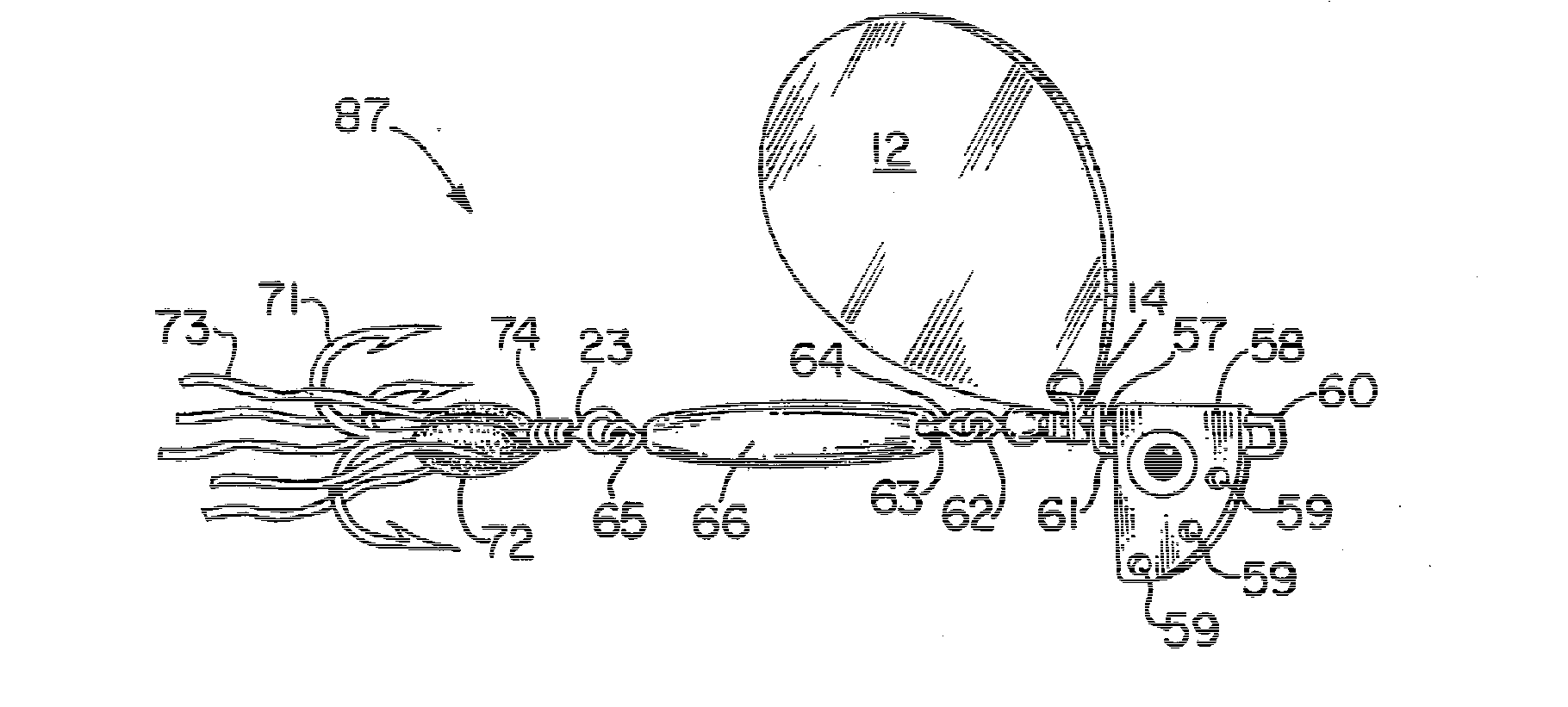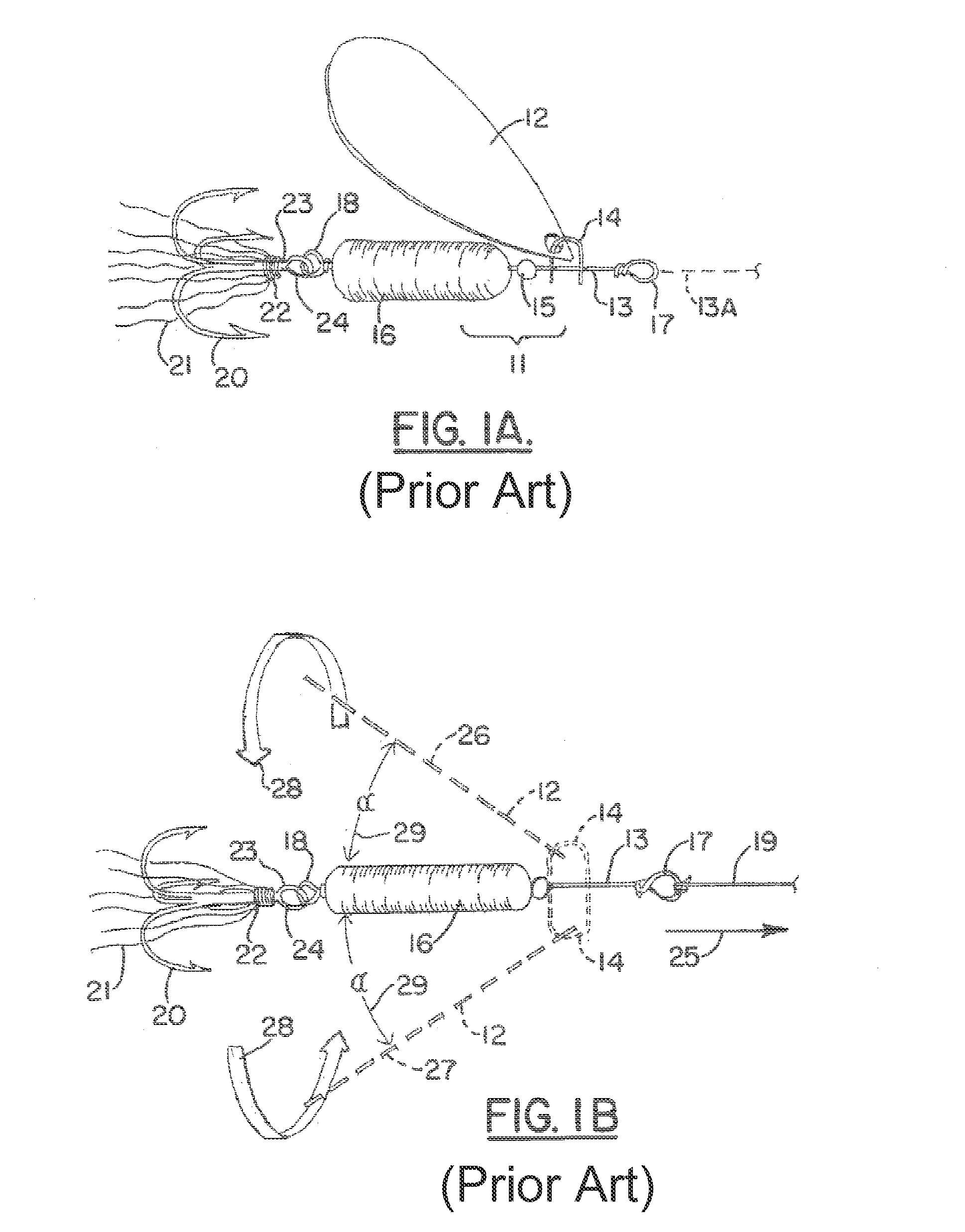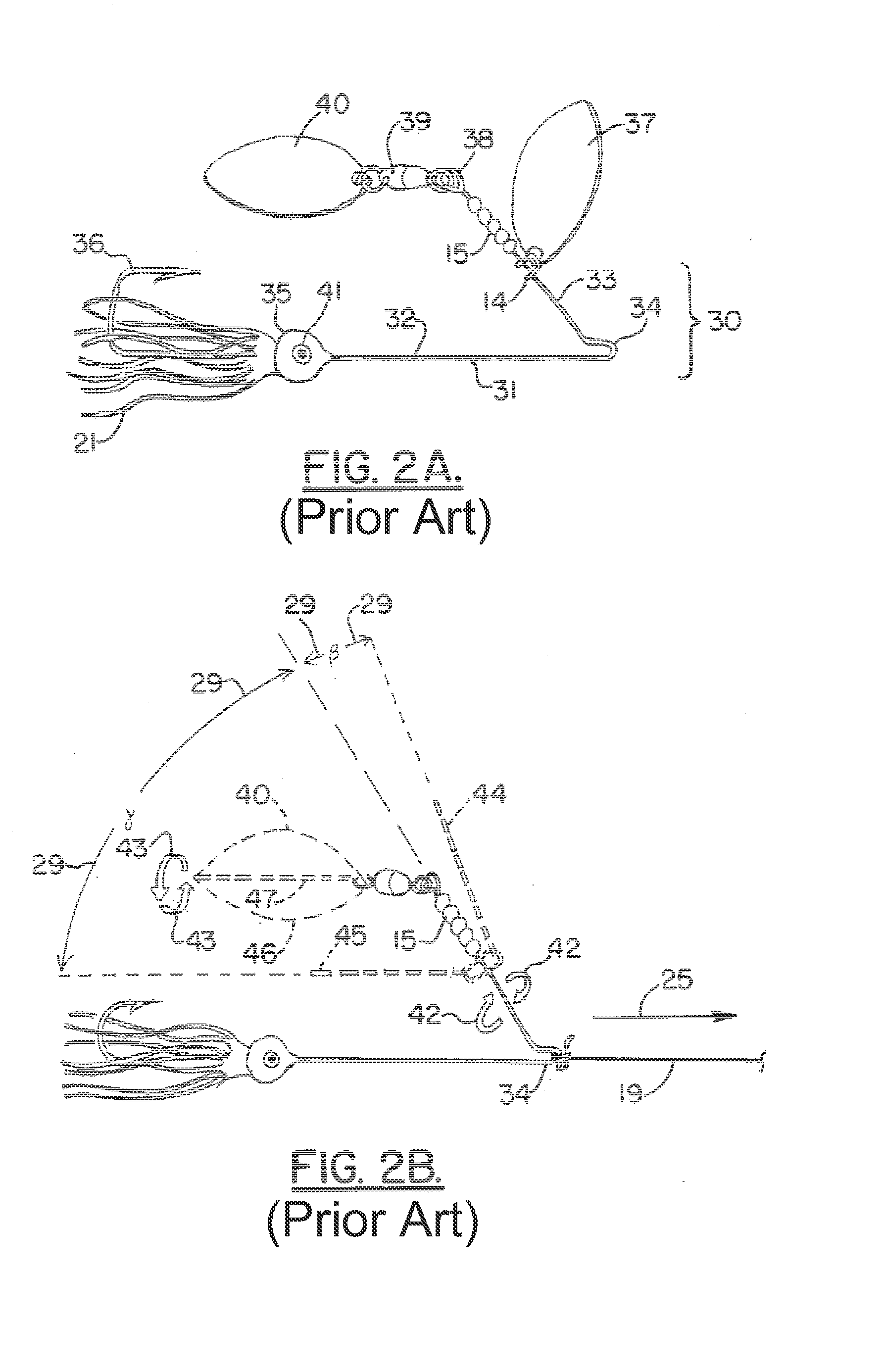Spinner fishing lure
a technology of spinning lures and lures, which is applied in the field of fishing lures, can solve the problems of preventing the lure from working properly, presenting another vexing problem, and a disadvantage of spinning lures,
- Summary
- Abstract
- Description
- Claims
- Application Information
AI Technical Summary
Benefits of technology
Problems solved by technology
Method used
Image
Examples
Embodiment Construction
[0045]FIG. 1A shows a traditional spinner 11. A rotating blade 12 is mounted on a single wire shaft 13 by a clevis 14. Below clevis 14, a small metal or plastic bead 15, also mounted on wire axis 13, facilitates the rotational movements of clevis 14 and blade 12 around axis 13. Below bead 15, one or more lure body components 16 provide weight to allow for better casting of the lure. At the proximal and distal ends of single wire shaft 13, proximal wire shaft eye 17 and distal wire shaft eye 18 allow for the attachment of fishing line 19 (proximally) and of a treble hook 20 (distally). Most spinners also feature decorative dressing material 21 (often consisting of colored animal hair such as buck-tail material), attached with yarn 22 to hook shank 23 below hook eye 24.
[0046]FIG. 1B shows traditional spinner 11 in motion. Fishing line 19 is attached to proximal wire shaft eye 17, and spinner 11 is pulled through the water (not depicted) in a direction generally coaxial to fishing line...
PUM
 Login to View More
Login to View More Abstract
Description
Claims
Application Information
 Login to View More
Login to View More - R&D
- Intellectual Property
- Life Sciences
- Materials
- Tech Scout
- Unparalleled Data Quality
- Higher Quality Content
- 60% Fewer Hallucinations
Browse by: Latest US Patents, China's latest patents, Technical Efficacy Thesaurus, Application Domain, Technology Topic, Popular Technical Reports.
© 2025 PatSnap. All rights reserved.Legal|Privacy policy|Modern Slavery Act Transparency Statement|Sitemap|About US| Contact US: help@patsnap.com



